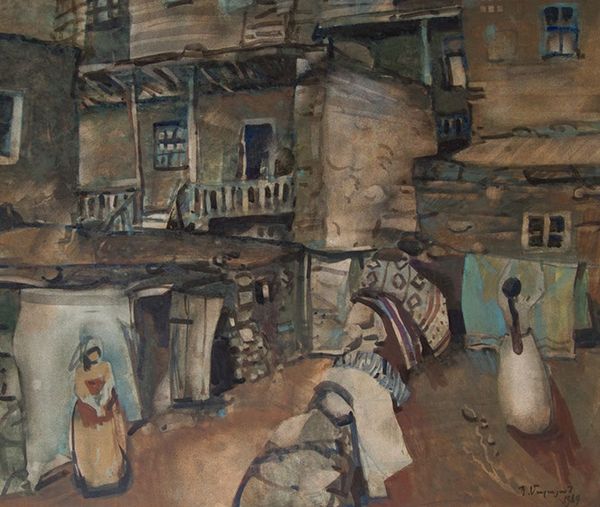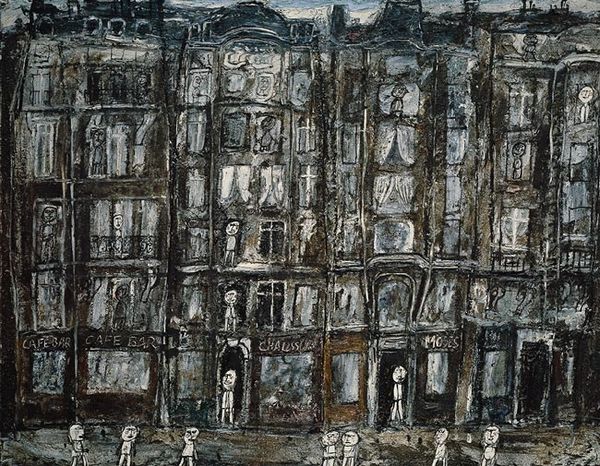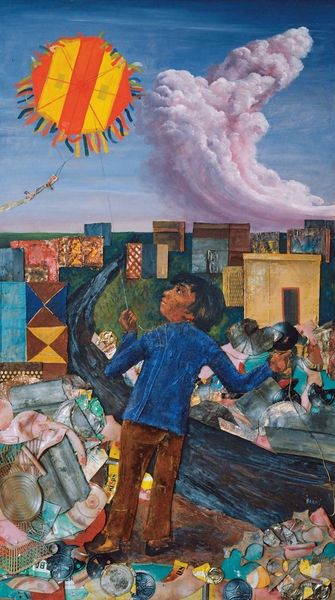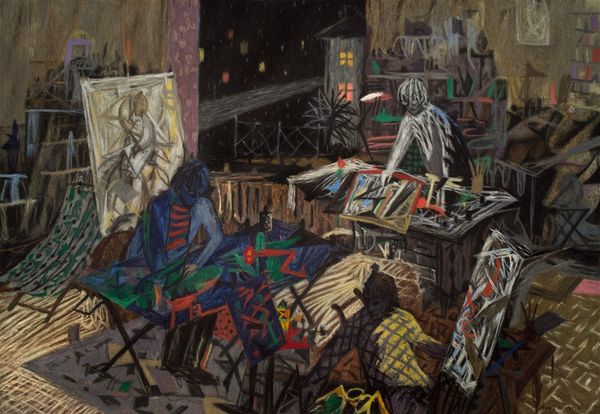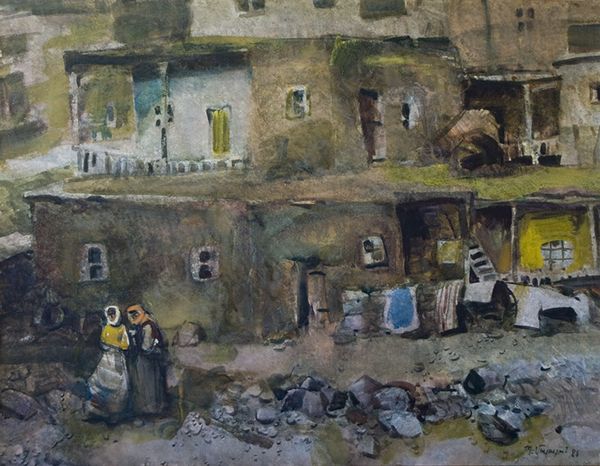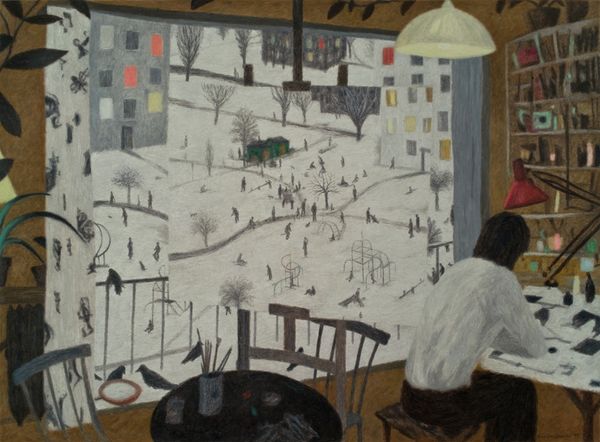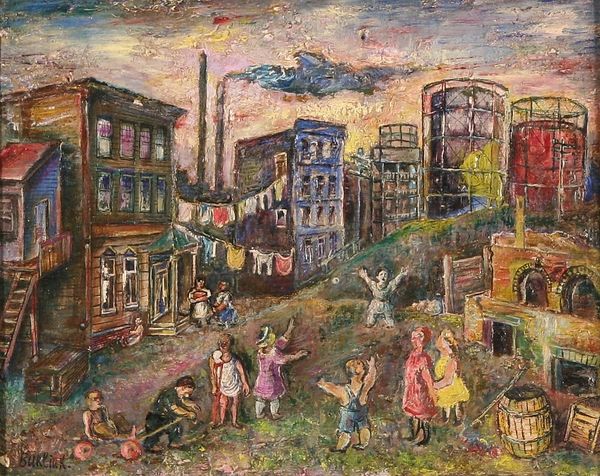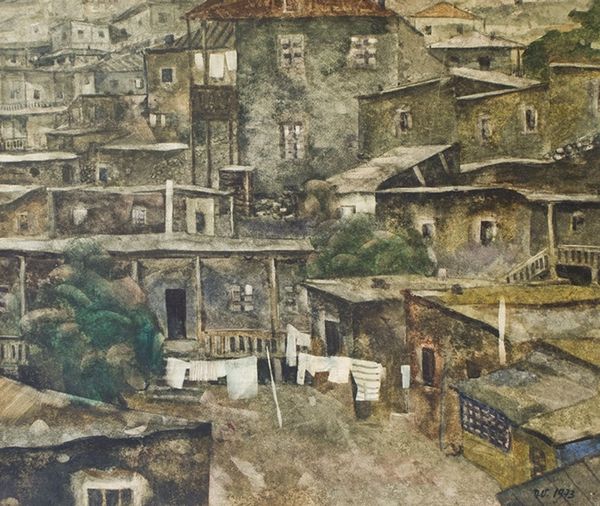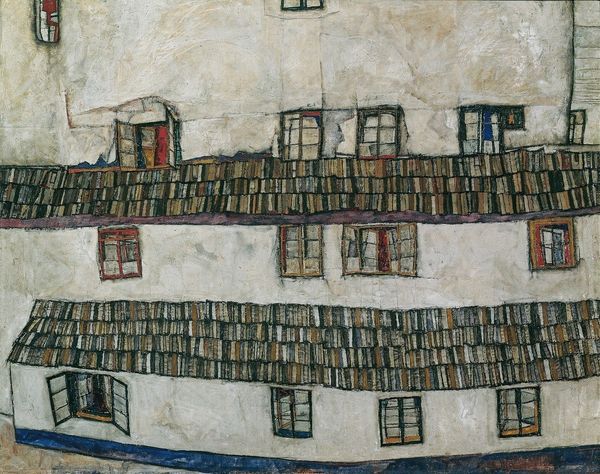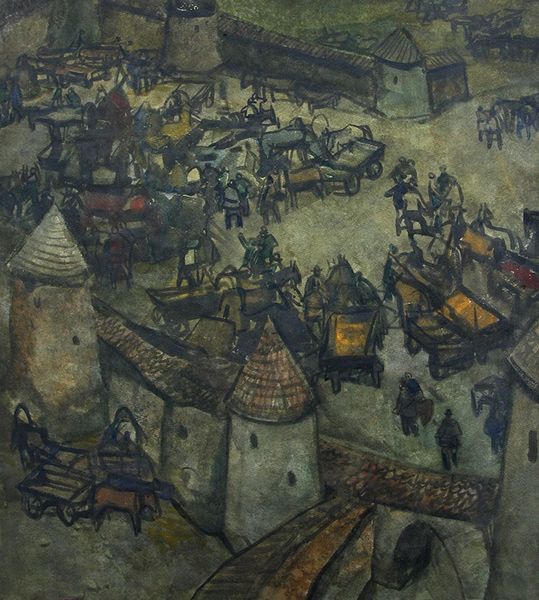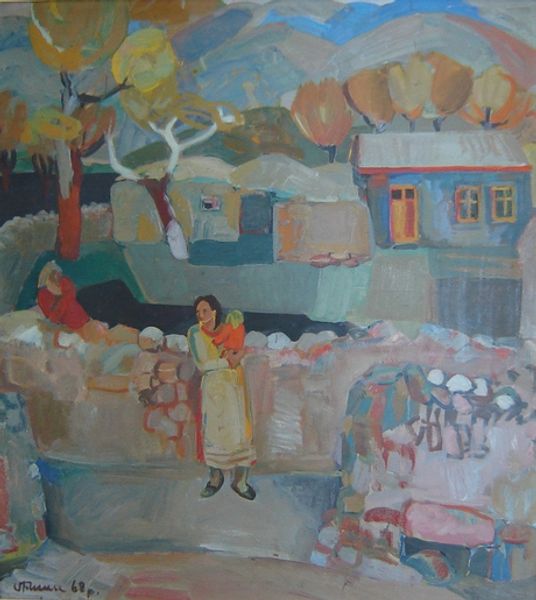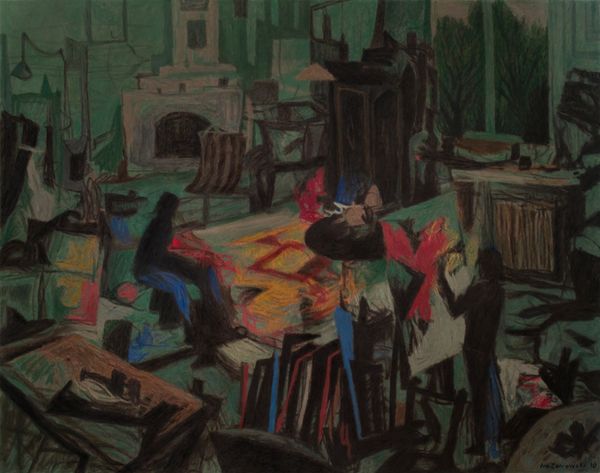
painting, oil-paint
#
narrative-art
#
painting
#
oil-paint
#
landscape
#
figuration
#
social-realism
#
cityscape
#
mixed media
#
modernism
Copyright: Candido Portinari,Fair Use
Curator: Here we see "Favelas," an oil painting rendered in 1930 by Candido Portinari. What strikes you first? Editor: The palette, definitely. It's almost monochromatic, a cool, greyed blue. The geometry of the buildings is softened by the limited range, giving the structures a surprisingly gentle feel. Curator: Absolutely. Portinari's constrained use of color directs our attention to the painting’s construction. Note how the geometric shapes, the cubes and triangles representing dwellings, are built upon one another to create a sense of density, almost compression. Editor: It’s a fascinating tension, that formal beauty combined with what I understand of the historical reality. Portinari's work often tackled the social disparities of Brazil, and "Favelas" captures that. He shows the informal architecture born out of necessity and social inequalities, growing organically. These self-made, precarious urban environments speak volumes about resourcefulness and hardship. Curator: I would say this portrayal extends beyond the merely representational. Look at the upward thrust of the composition. Portinari uses this dramatic scaling, drawing us, along a kind of compositional ascension, through the canvas. How might this speak to the experience of inhabiting such a space? Editor: It might illustrate a visual manifestation of social mobility...or perhaps more darkly the sheer uphill struggle in the lived experience of the favela residents? Considering that at the time, Brazil was undergoing rapid urbanization, "Favelas" acts as a potent document of this period. These communities were largely ignored by official planning, so this painting brings these people and their environment into a wider social consciousness. Curator: Very true. Considering how Portinari was exploring similar compositional elements at that time in portraits, might "Favelas" function, in this sense, as an act of visual portraiture—not of a person, but of a collective space and identity? Editor: It definitely has that power. Seeing those buildings stacked, almost like an organism…Portinari transforms a place often marginalized into a central protagonist in the unfolding narrative of Brazil's trajectory. He is granting the favela visibility and even dignity. Curator: Yes, something quite profound emerges from this interplay between the aesthetic composition and historical context. Editor: I agree. There are few artworks that capture such visual and socio-historical density.
Comments
No comments
Be the first to comment and join the conversation on the ultimate creative platform.
